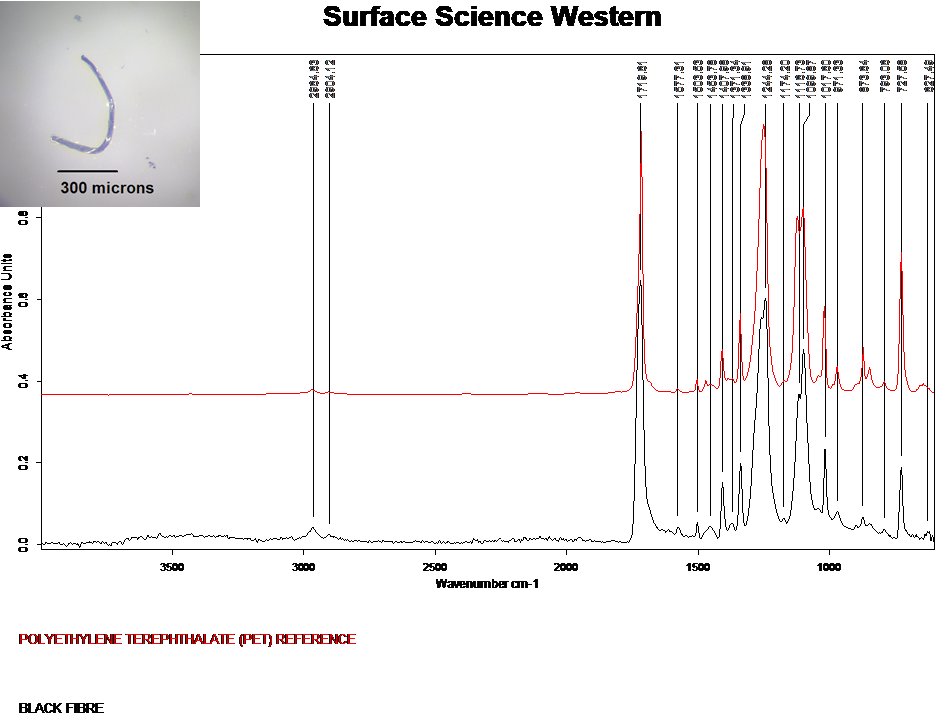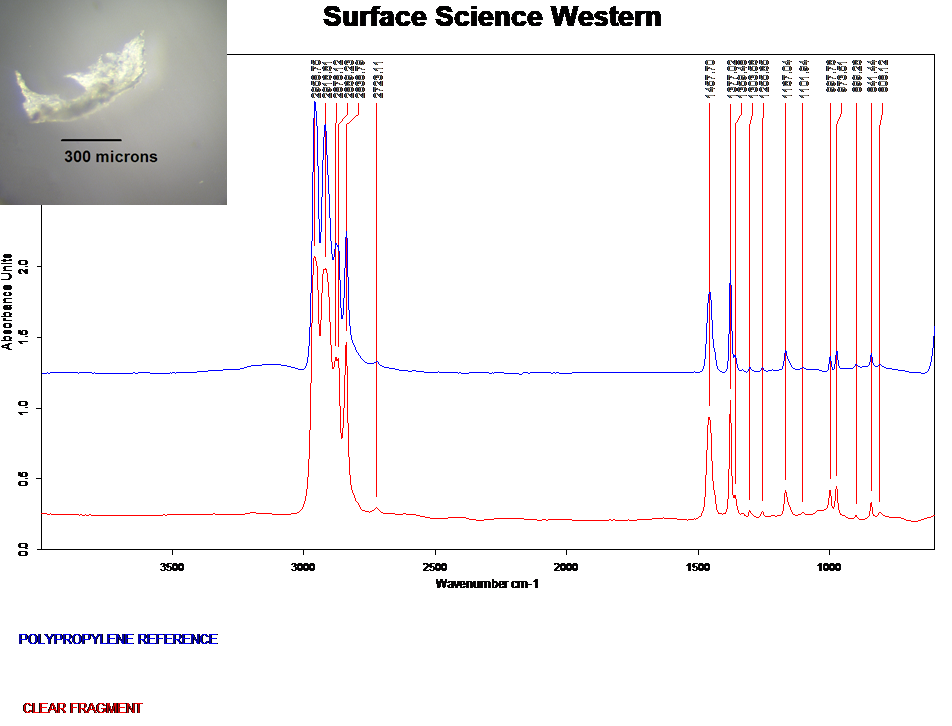This application note shows how Fourier transform infrared (FTIR) spectroscopy can be used to characterize microplastics. Recent studies performed in our lab were done on microplastics found in the digestive tract of aquatic species and on those found on the shoreline of a body of water. Microplastics are typically defined as polymer particles less than 5 mm in diameter. FTIR spectroscopy is an easy, straightforward way to analyse and identify microplastics.
Request for Analysis:
We are typically requested to analyse the particles and fibres provided to determine if they are microplastics and, if they are, identify the microplastic material (i.e plastic vs not plastic; and if plastic, the type of polymer). Particles and fibres were collected, separated and prepared by the client and the samples were provided to SSW were clean and dry.
Preparing the Samples to Submit to SSW:
Due to the complex specific sample preparations needed to separate the particles and remove contaminants, the samples need to be prepared by the client. There are a variety of techniques used to separate microplastics from the matrix in which they are found. Many of the techniques employ a density separation method along with a digestion step (to eliminate organics) followed by filtration. The samples submitted to SSW need to be provided clean and dry.
Methodology:
SSW has a variety of FTIR spectroscopic techniques available to analyse the samples and the technique chosen is dependent mainly on the size of the individual particle.
SSW has a Bruker Tensor II system with a Hyperion 2000 microscope attachment that allows us to analyse small areas under the microscope. For the larger particles (> 200 microns in diameter but > 4mm), the samples are analysed using the micro-ATR objective equipped with a germanium crystal. This experimental setup allows one to analyse an area of approximately 80 – 100 microns in diameter to a depth of 1 – 2 microns. For smaller (< 200 microns) samples and fibres, the samples are transferred to a diamond compression cell, compressed and analysed in transmission mode under the microscope. Larger particles (> 4 mm x 4 mm) can be analysed using the Platinum® ATR accessory in the main box.
FTIR spectroscopy is an optical spectroscopy technique that allows one to determine the bonding present in a material. It is sensitive to components that are present in concentrations greater than approximately 3 – 5% of the total.
Results:
The samples are analysed by FTIR spectroscopy and the resulting spectrum is matched using reference libraries of known materials. FTIR is particularly useful in identifying many organic materials, including all types of polymers and the FTIR libraries of polymers are extensive. Below are some examples of the analysis of some suspected microplastic samples:
spacing

test block

test block
Notes:
If you are looking to see any minor contributions in the FTIR spectra such as inorganics, contributions on the surface, or oxidation of the polymer, then contamination from the environment from where the samples were collected and the sample preparation method may come into play. For determination of oxidation of the polymer, standards and integrations of the spectra are needed which can make the analyses complicated and increases the data processing costs.
SSW also has many other analytical instruments including scanning electron microscopy (SEM) coupled with energy dispersive X-ray (EDX) spectroscopy as well as Raman spectroscopy that can be used to further analyse microplastics.
For this application note, the client is only looking to identify the main microplastic material.

